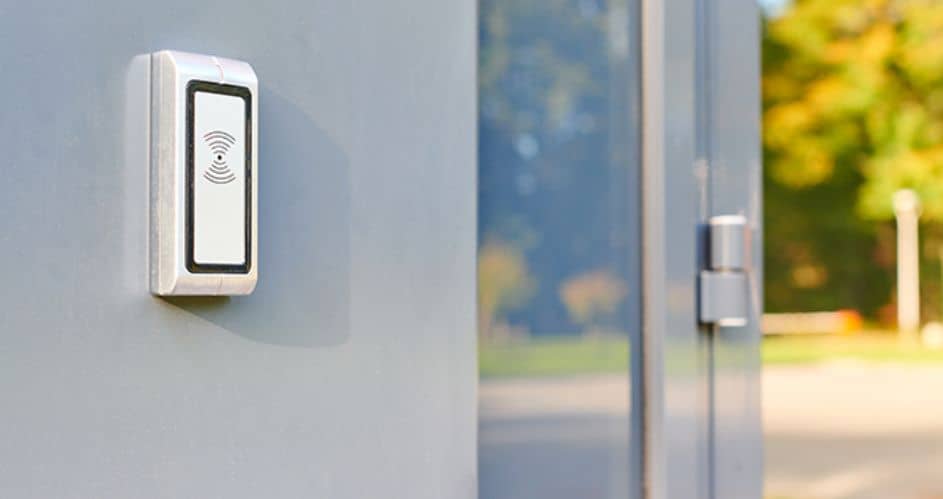
Integrated door systems are at the cutting edge of building security and functionality. These systems merge essential elements — like the physical door, access control, and entry alerts — with automation technology to create an innovative, unified entry solution.
This integration aims to bolster building security, streamline the entry process, and enhance the convenience of managing access, suitable for both commercial properties and private residences. Let’s take a look at how they work and why they’re driving the future of home safety and efficiency.
A Connected Home
At their heart, integrated door systems are about connectivity and efficiency. The doors become more than just a point of entry. They’re equipped with intelligent controls that regulate who can enter and when.
Whether it’s through keycards, PIN codes, or biometric authentication, access can be meticulously managed and monitored. Entry signals contribute to security by alerting when doors are accessed or if an unauthorized attempt is made.
The automation aspect takes convenience to the next level. Doors can operate hands-free, open in response to verified users, and integrate with other smart home or building systems for a streamlined, modern experience. This not only saves time but also can contribute to energy savings by controlling how long doors stay open.
An integrated door system is an excellent investment for any modern building, enhancing security protocols, reducing operational hassles, and providing users with a smooth, secure entry experience.
Types of Integrated Door Systems
Choosing the right type of integrated door system is crucial for meeting the specific security and operational needs of a building. From single-entry points to enterprise-level networks, the range of systems available can accommodate the varied requirements of homes, businesses, and high-security environments.
Let’s look at the different types of integrated door systems available.
Single-Entry Integrated Systems
These systems control access to individual entry points and are suitable for small businesses or homes requiring high security for a specific area.
Multi-Entry Integrated Systems
These are ideal for bigger buildings with multiple access points, allowing centralized control over all doors.
Enterprise-Level Integrated Systems
These are complex networks of door systems managed via sophisticated software, often found in large corporations or high-security areas like airports.
Customizable Integrated Systems
These tailor-made solutions are designed to meet the specific needs of a property or organization and incorporate a range of technologies and features.
Benefits of Integrated Door Systems
Integrated door systems offer many advantages that enhance building management and user experience. By consolidating security and accessibility into a single, streamlined system, they provide not only robust protection but also a range of operational benefits.
Here are some of the key benefits that these systems offer:
Enhanced Security
Integrated systems provide comprehensive security measures, such as biometric scanners and advanced encryption, preventing unauthorized access.
Streamlined Access Control
They allow seamless entry and exit management, with features like remote unlocking and programmable keycards.
Improved Data Collection
These systems can log entry and exit times, providing valuable data for security and administrative purposes.
Energy Efficiency
Automatic doors can help conserve energy by reducing the amount of time they remain open and maintaining the building’s insulation.
Emergency Responsiveness
Integrated systems can be programmed to unlock during emergencies, facilitating quick evacuations.
Cost-Effectiveness
Over time, the efficiency and durability of integrated door systems can result in cost savings in maintenance and energy consumption.
Aesthetic Integration
Modern integrated systems offer sleek designs that can be customized to complement the aesthetic of the building.
Convenience and Accessibility
These systems ensure ease of access for all users with features like handicap accessibility and remote operation.
Reduced Maintenance
The integrated nature of these systems often requires less maintenance than traditional doors due to fewer mechanical failures.
Long-Term Reliability
Driven by the latest technology, integrated door systems are built to last, ensuring reliable performance over time.
The Future Is Secure
Integrated door systems are a leap forward in the approach to building management and security infrastructure. By adopting this technology, property owners and managers can rest easy knowing that every aspect of entry and exit operations is accounted for.
Improved security is just the beginning — these systems also offer streamlined access control that is both sophisticated and user-friendly. Plus, smart doors contribute to energy savings and reduced operational costs.
The convenience of integrated door systems is unparalleled, providing easy access for people of all abilities — integrating smoothly with other building management systems.
As the focus on safety and innovation continues to shape building design, it is clear that integrated door systems are paving the way toward a new standard.
They are not a trend but an evolution towards smarter, more secure buildings equipped to meet the challenges of the modern world. Adopting integrated door systems is a strategic move towards a more secure, efficient, and accessible future for everyone.